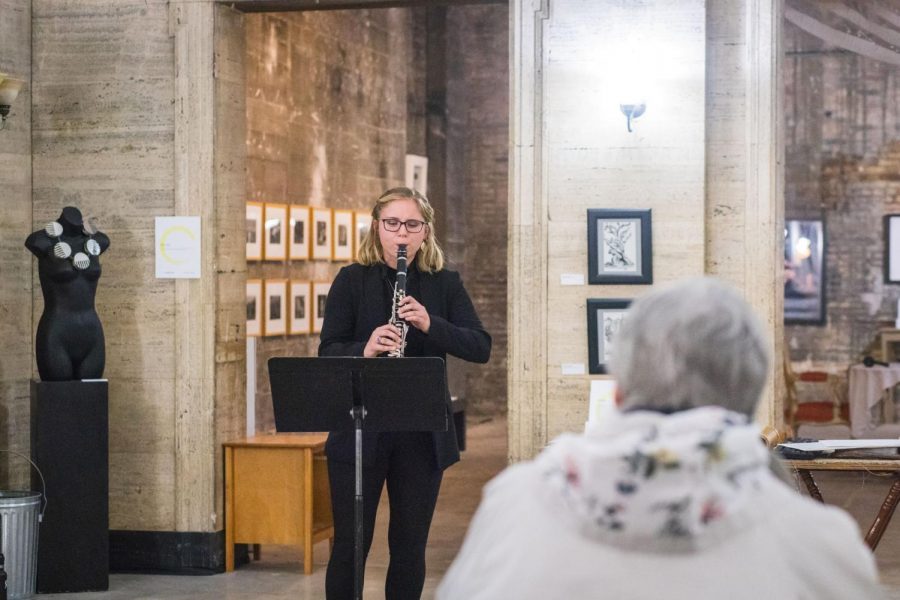Percussion performance inspired by fallen empires
Oct 7, 2019
On Friday, Oct. 4, a Percussion and clarinet Performance took place at the NOMAD Gallery, featuring clarinet performances from two students, Lindsey Boss and Jacob Bleeker, and a percussion performance from GVSU professor Greg Secor.
Secor’s performance was three acts, or movements, of a seven-movement piece entitled “Fall of the Empire.” The composition was originally composed by Frederic Rzewski. The movements that Secor performed include The Prologue, “Act 4: Global Warming,” and “Act 5: TheGround.”
“The piece in totality has an underlying theme of empires or governments that you might say have fallen,” said Secor.
The performance contained both percussion instruments and spoken word pieces. “The texts are taken from different sources, one of the movements has a text by Charles Dickens, one has parts of a speech by Thomas Jefferson about slavery. Some of the texts are the composer’s own words,” Secor said.
Secor believes the text to be important to the understanding of the composition. “Without the text, the piece would make no sense at all,” Secor said. “The composer conceived of it with the piece in mind, he’s done a lot of work with the text.”
“The first movement is called The Prologue, and I play a pod rattle, a rattle with seeds that come off a tree. That’s the movement with the text by Thomas Jefferson,” Secor said.
Regarding the second act, Secor said, “This movement is called Global Warming, with the text by the performer. What may be significant to mention is that when he wrote the music, he wrote for four different sounds. The performer chooses which sound to play, in my case, I’ve chosen the automobile related objects.”
Some of these objects include five gallon gas cans, brick jumps and a flywheel. These objects were the percussion instruments that he used to perform the fourth movement of the composition, “Global Warming.”
“The third movement is called the ground, which also has text by the composers,” Secor said. For the third act of the composition, Secor picked objects that he described as being “American.” He included Tupperware, an engine control module, bamboo, a computer keyboard and a metal pot.
“I picked this piece for the performance because it’s in an art gallery, as art gallery-goers are open minded. Part of the equation was the logistics of that particular place downtown. The instruments are a lot more mobile,” Secor said.
According to the event page, the composition as a whole “reflects the different symptoms present in empires (current and throughout history) that crumble, disintegrate from within and ultimately collapse.” This is Secor’s interpretation of the original composer’s vision of the five movements.
“Rzewski teaches at the royal conservatory of music in Belgium, lived most of his life in Europe, with a different perspective on America as we do,” said Secor. “You could also apply the text to any empire that’s done itself in.”
As for Secor’s vision on what the audience gets from the performance, he said, “The piece is up to the individual. I would ask listeners to listen with an open mind, the same way they would listen to a piece by Bach. They don’t like it, that’s fine, not everyone likes Bach.”






















